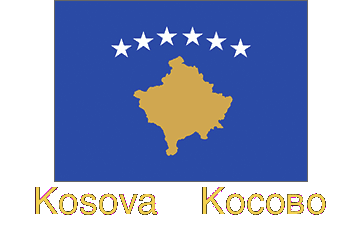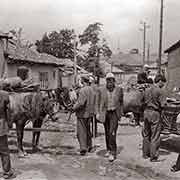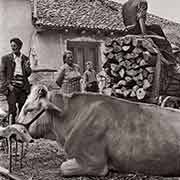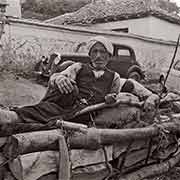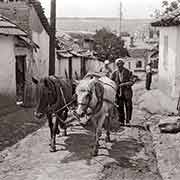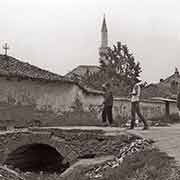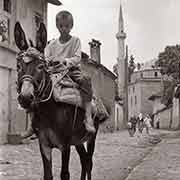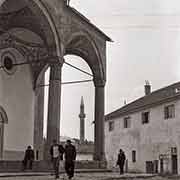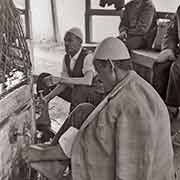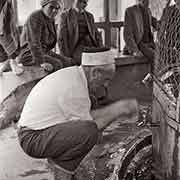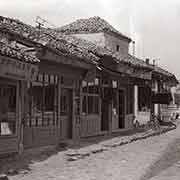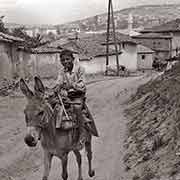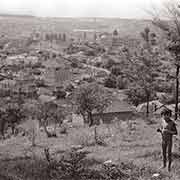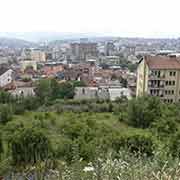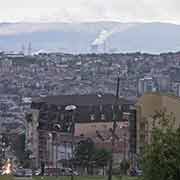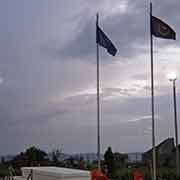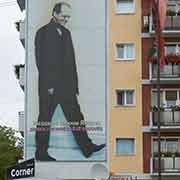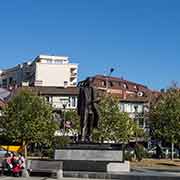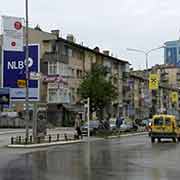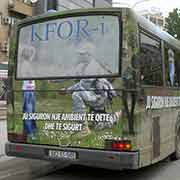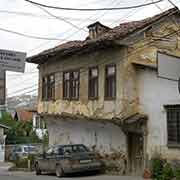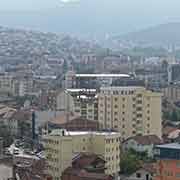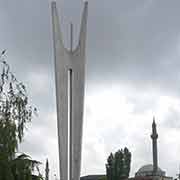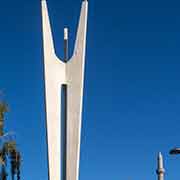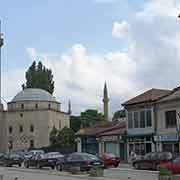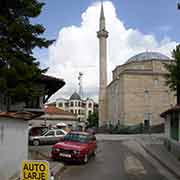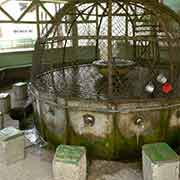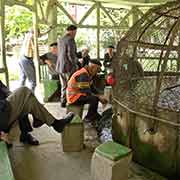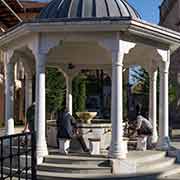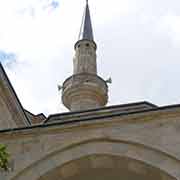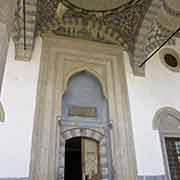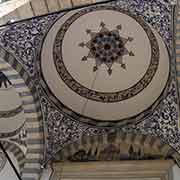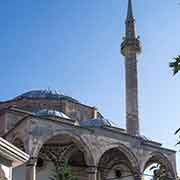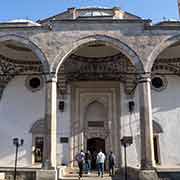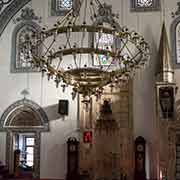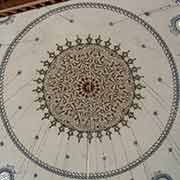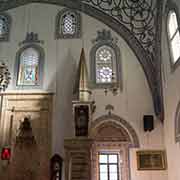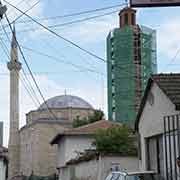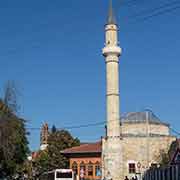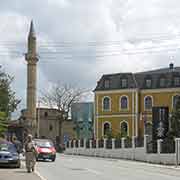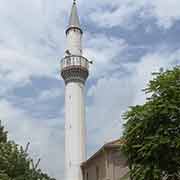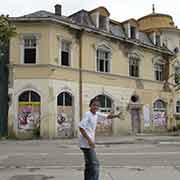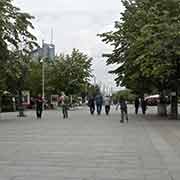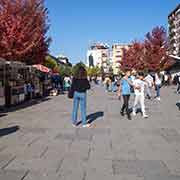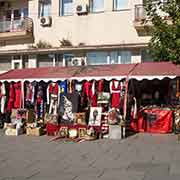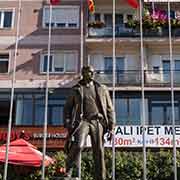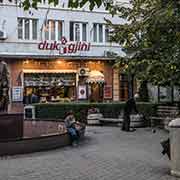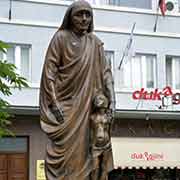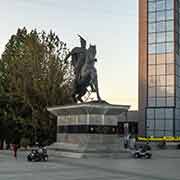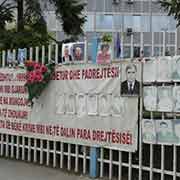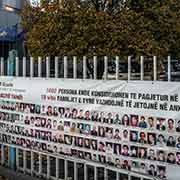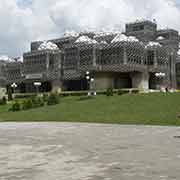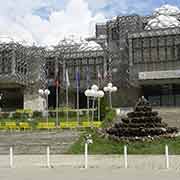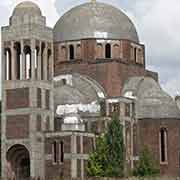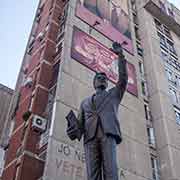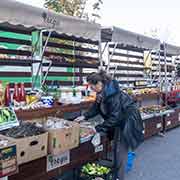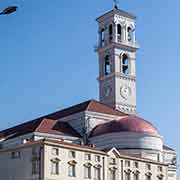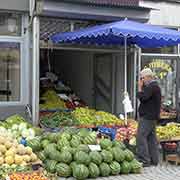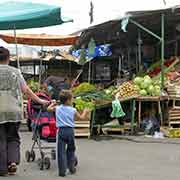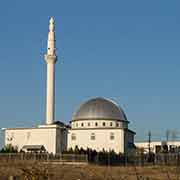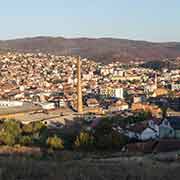Photos of Prishtina, Kosovo's Capital City, Kosovo
Prishtina, Kosovo's Capital City
Prishtina (or Prishtinë, in a sentence with a preposition like “to”, “in” or “from Prishtina”) is the capital and largest city of Kosovo, with a population of around 500,000. The Serbian name is Приштина (Priština). The city has a majority Albanian population, alongside other smaller communities including Turks, Serbs, Bosniaks, Roma and others.
you may then send it as a postcard if you wish.
In Roman times a large town called Ulpiana existed 15 kilometres south of modern-day Prishtina. This city was destroyed, but restored by the Emperor Justinian I. Today the town of Lipljan stands on the site of the Roman city, and remains of the old town can still be seen. After the fall of Rome, Prishtina grew from the ruins of the ancient Roman city. It was located at a junction of roads leading in all directions throughout the Balkans and became an important trading centre on the main trade routes across south-eastern Europe. The Battle of Kosovo took place at Kosovo Polje (Fusha e Kosovës) on 15 June 1389 when an invading Ottoman army decisively defeated the Balkans coalition army. During the Ottoman Empire, Prishtina became increasingly Ottoman in character following the conversion to Islam of many of its inhabitants, both Albanians, and Slavs.
From the 1870s onwards Albanians in the region formed the League of Prizren to resist Ottoman rule, and a provisional government was established in 1881. In 1912 Prishtina, along with the rest of Kosovo, was briefly included in the newly independent state of Albania. But the following year the Great Powers forced Albania to cede the region to the Kingdom of Serbia and subsequently Yugoslavia. Before World War II, Prishtina was an ethnically mixed town with large communities of Albanians and Serbs. Many Albanians were deported to Turkey as a consequence of the ethnic cleansing program applied by the Serbs. Muslim Albanians were identified as Turks and thus forcibly evicted from their ancestors' homes. The Albanians were sent to Turkey, where the Turkish government enforced them to accept new Turkish names and settle the Turkish provinces formerly inhabited by Greeks and Armenians. The Second World War, however, saw the decline of Prishtina's Serbian community as well as a large-scale settling of Albanians in the town. Between 1941 and 1945 Prishtina was incorporated into the Italian-occupied Greater Albania.
In 1946, Prishtina became the capital of the Socialist Autonomous Region of Kosovo. Between 1953 and 1999, the population increased from around 24,000 to over 300,000. The most significant increase was among the Albanian people, a large number of whom had moved from the countryside areas to settle in the city. The Albanian population increased from around 9,000 in 1953 to nearly 76,000 in 1981. In November 1968, student demonstrations and riots in Belgrade spread to Prishtina but were put down by the Yugoslav security forces. Some demands of the students were nonetheless met by the Tito government. It included the establishment in 1970 of the University of Prishtina as an independent institution, giving a significant boost to Albanian-language education and culture in Kosovo. All this was nullified by Serbian President Slobodan Milošević in 1989. He imposed a harshly repressive regime throughout Kosovo with Albanians largely being purged from state industries and institutions including the University of Prishtina: 800 lecturers were sacked and 22,500 of the 23,000 students expelled. In response, the Kosovo Albanians set up a “Republic of Kosova” under the authority of the Democratic League of Kosovo (LDK), led by the writer Ibrahim Rugova. Although the city was formally controlled by Serbs appointed by the Milošević government, the LDK established parallel structures, funded by private contributions. These provided free services such as health care and education that were largely denied to the Albanian population.
The LDK's role meant that when the Kosovo Liberation Army began to attack Serbian and Yugoslav forces from 1996 onwards, Prishtina remained mostly calm - until the outbreak of the Kosovo War in March 1999. The city was placed under a state of emergency at the end of March, and large areas were sealed off. After NATO began air strikes against Yugoslavia on 24 March 1999, widespread violence broke out in Prishtina. Serbian and Yugoslav forces shelled several districts and, in conjunction with paramilitaries, conducted large-scale expulsions of ethnic Albanians accompanied by widespread looting and destruction of Albanian properties. Ethnic Albanians were forced onto trains in Prishtina's main station, taken to the border with the Republic of North Macedonia and driven into exile. In May 1999 between 100,000-120,000 people had been forced out of Prishtina by government forces and paramilitaries. Several strategic targets in Prishtina were attacked by NATO during the war, but physical damage was restricted mainly to a few specific neighbourhoods, shelled by Yugoslav security forces. At the end of the war, most of the city's 40,000 Serbs had fled. The few who remained were subjected to harassment and violence in revenge by Albanian gangs, which reduced Prishtina's Serb population still further. Other national groups accused by Albanians of collaboration with the Serbian war effort - notably the Roma - were also driven out. According to the United Nations High Commissioner for Refugees, by August 1999, fewer than 2,000 Serbs were left in the city. The number reportedly fell even further after the March 2004 unrest in Kosovo. In early 2008 only a few dozen Serbs remained in Prishtina, most of whom were elderly people.


